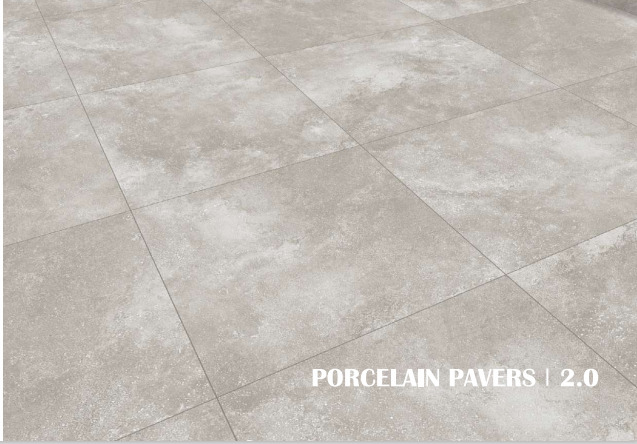Introduction:
Limestone, with its timeless beauty, versatility, and durability, has played a pivotal role in shaping architectural marvels and landscapes around the world. In India, a land rich in geological diversity and cultural heritage, limestone holds a special place as a prized natural resource. This blog embarks on a journey to uncover the legacy of https://g.co/kgs/exZQPo, tracing their origins, craftsmanship, market dynamics, and the profound impact they have on the global architectural landscape.
The Geological Bounty of Indian Limestone:
India is blessed with abundant reserves of limestone, found in various geological formations across the country. From the rugged cliffs of the Western Ghats to the ancient sedimentary deposits of the Deccan Plateau, limestone is a ubiquitous presence in India’s diverse landscape. These geological treasures serve as the foundation for India’s limestone export industry, providing a rich palette of options for architects, designers, and builders worldwide.
Characteristics of Indian Limestone:
Indian limestone is celebrated for its exceptional quality, versatility, and aesthetic appeal. Its hues range from creamy whites and soft beiges to warm yellows and earthy browns, with variations in texture and veining adding depth and character to each slab. Whether used for flooring, cladding, paving, or sculptural elements, Indian limestone exudes a timeless elegance that enhances any architectural or landscaping project. Moreover, its natural durability, weather resistance, and low maintenance make it a preferred choice for both indoor and outdoor applications.
Craftsmanship and Manufacturing Process:
The craftsmanship involved in quarrying and processing Indian limestone is a testament to the country’s rich tradition of stone craftsmanship. Skilled artisans, equipped with traditional hand tools and modern machinery, work with precision and care to extract raw limestone blocks from quarries, cut them into slabs or tiles, and finish them to perfection. Whether it’s intricate carvings for temples, elegant facades for palaces, or contemporary cladding for modern buildings, each piece of Indian limestone bears the mark of the artisan’s skill and attention to detail.
Market Dynamics and Key Players:
India’s limestone export industry is characterized by a diverse ecosystem of manufacturers, exporters, and suppliers, each contributing to the country’s status as a global leader in limestone exports. Key players in the industry include established companies such as Indiana Limestone Company, Pokarna Limited, Tandur Stones, and Earthstone Global, among others. These companies leverage their expertise in sourcing, processing, and exporting limestone to cater to the diverse needs and preferences of customers worldwide.
Market Trends and Innovations:
Several key trends are shaping the landscape of limestone exports from India, reflecting evolving design aesthetics and market dynamics:
Architectural Applications: Limestone is increasingly being used in architectural applications, including exterior cladding, flooring, and landscaping features. Its timeless beauty and versatility make it a favored material for both traditional and contemporary design schemes. Architects and designers are drawn to limestone’s ability to create elegant facades, graceful columns, and intricate carvings that add character and sophistication to buildings and public spaces.
Sustainability and Green Building: As sustainability becomes a priority in architectural design, limestone is gaining recognition for its eco-friendly properties. Quarried from natural geological formations, limestone requires minimal processing and has a low environmental footprint compared to synthetic building materials. Designers and developers are increasingly incorporating limestone into green building projects as a sustainable and locally sourced alternative to traditional construction materials.
Restoration and Conservation: Limestone’s durability and weather resistance make it an ideal choice for restoration and conservation projects involving historic buildings and monuments. Indian limestone exporters play a crucial role in supplying high-quality stone for the repair and rehabilitation of heritage structures, ensuring that these architectural treasures are preserved for future generations to admire and appreciate.
Challenges and Opportunities:
Despite its strong position in the global market, India’s limestone export industry faces certain challenges, including:
Infrastructure Development: Investments in infrastructure, including transportation networks, logistics facilities, and port infrastructure, are essential to support the growth and expansion of India’s limestone export industry. Improved infrastructure would facilitate efficient movement of raw materials and finished products, reduce lead times, and enhance competitiveness in global markets.
Technological Innovation: Continuous investment in research and development is crucial to drive technological innovation and process optimization in the limestone industry. Advanced technologies, such as robotic quarrying, CNC machining, and digital fabrication, can enhance productivity, precision, and product quality, giving Indian exporters a competitive advantage in the global market.
Regulatory Compliance: Compliance with local and international regulations, including environmental standards, labor laws, and trade policies, poses challenges for limestone exporters. It is imperative for exporters to stay abreast of regulatory requirements, implement best practices, and uphold ethical standards to maintain market access and build trust with customers.
Market Diversification: Diversifying into new markets and product segments presents opportunities for Indian limestone exporters to expand their customer base and mitigate risks associated with market fluctuations. By targeting emerging markets, niche applications, and value-added products, exporters can unlock new avenues for growth and profitability in the global marketplace.
Future Outlook:
Despite the challenges, the future outlook for India’s limestone export industry is promising, fueled by growing global demand for natural stone and India’s competitive advantages in terms of quality, craftsmanship, and innovation. As architects, designers, and developers increasingly prioritize sustainability, durability, and aesthetic appeal in their projects, limestone is poised to play a central role in shaping the built environment of the future. With a focus on innovation, sustainability, and market-driven strategies, India’s limestone exporters are well-positioned to capitalize on emerging opportunities and solidify their position as key players in the global stone market.
Conclusion:
India’s limestone exporters are custodians of a rich geological heritage, harnessing the timeless beauty and enduring strength of limestone to create architectural masterpieces that transcend time and space. With their unmatched craftsmanship, commitment to quality, and innovative spirit, Indian exporters are leaving an indelible mark on the global architectural landscape, one slab of limestone at a time. As the industry continues to evolve and adapt to changing market dynamics, India’s limestone exporters are poised to lead the way, shaping the future of design and construction with their passion, creativity, and ingenuity.





